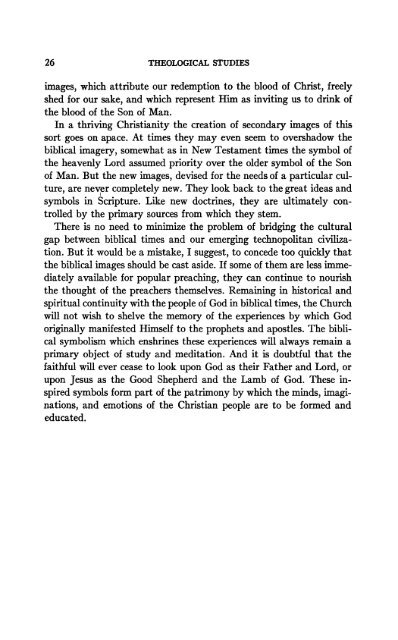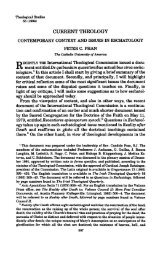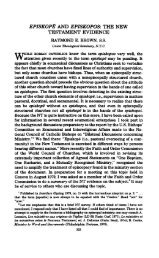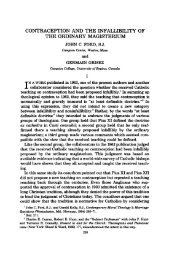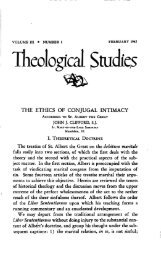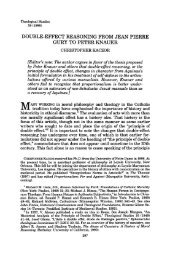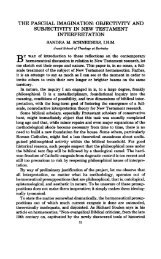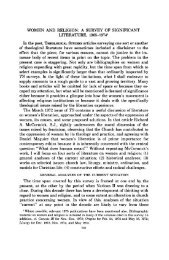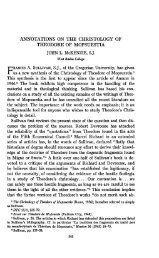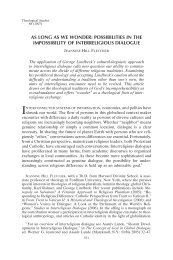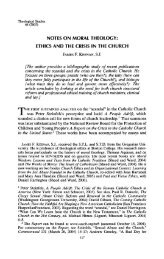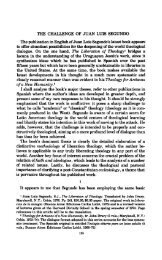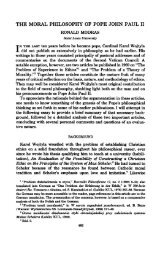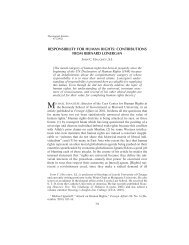SYMBOL, MYTH, AND THE BIBLICAL REVELATION AVERY ...
SYMBOL, MYTH, AND THE BIBLICAL REVELATION AVERY ...
SYMBOL, MYTH, AND THE BIBLICAL REVELATION AVERY ...
Create successful ePaper yourself
Turn your PDF publications into a flip-book with our unique Google optimized e-Paper software.
26 <strong>THE</strong>OLOGICAL STUDIES<br />
images, which attribute our redemption to the blood of Christ, freely<br />
shed for our sake, and which represent Him as inviting us to drink of<br />
the blood of the Son of Man.<br />
In a thriving Christianity the creation of secondary images of this<br />
sort goes on apace. At times they may even seem to overshadow the<br />
biblical imagery, somewhat as in New Testament times the symbol of<br />
the heavenly Lord assumed priority over the older symbol of the Son<br />
of Man. But the new images, devised for the needs of a particular culture,<br />
are never completely new. They look back to the great ideas and<br />
symbols in Scripture. Like new doctrines, they are ultimately controlled<br />
by the primary sources from which they stem.<br />
There is no need to minimize the problem of bridging the cultural<br />
gap between biblical times and our emerging technopolitan civilization.<br />
But it would be a mistake, I suggest, to concede too quickly that<br />
the biblical images should be cast aside. If some of them are less immediately<br />
available for popular preaching, they can continue to nourish<br />
the thought of the preachers themselves. Remaining in historical and<br />
spiritual continuity with the people of God in biblical times, the Church<br />
will not wish to shelve the memory of the experiences by which God<br />
originally manifested Himself to the prophets and apostles. The biblical<br />
symbolism which enshrines these experiences will always remain a<br />
primary object of study and meditation. And it is doubtful that the<br />
faithful will ever cease to look upon God as their Father and Lord, or<br />
upon Jesus as the Good Shepherd and the Lamb of God. These inspired<br />
symbols form part of the patrimony by which the minds, imaginations,<br />
and emotions of the Christian people are to be formed and<br />
educated.


